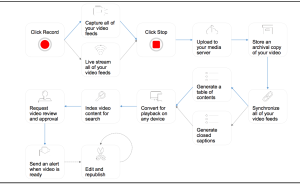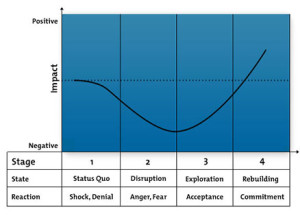Recently, I attended a workshop on Design Thinking, an unconventional approach to innovation and problem-solving developed by the Plattner Institute of Design at Stanford University. Design Thinking seeks to apply the mindset and methods of designers to develop products, improve processes, and generally solve business problems. The model has become popular in business and education but also speaks to aspects of our personal growth.
Creative exploration is the main method of achieving progress through Design Thinking. But the Plattner Institute, which goes by the nickname d.school, is quick to point out that they do not “teach creativity”. Instead, they see creativity as an innate trait everyone possesses in childhood that is later squelched by the modern, grown-up world. Design Thinking attempts to reinvigorate the creative confidence of our child lives and apply it to real world problems.
As children, we possess unbridled creativity. We play, ask crazy questions, and invent fantasy worlds, all without any limits placed on our imaginations. We concoct games on the fly with arcane rules and invisible boundaries. We pretend to be astronauts by putting laundry baskets over our heads (we all did that, it wasn’t just me, right?). Globs of paint can become alien planets or hybrid animals. Legos are fashioned into castles and cars.
But sadly, as we grow up our creative impulses do not seem to stay with us. The rigid structure of standardized education and the pressure to conform wears away at our impulse to think creatively. And yet creative thinking, problem-solving, and innovation are often considered the most desirable attributes in the today’s business world.
Design Thinking attempts to address this disconnect. One of the cornerstones of their philosophy is overcoming four imposing fears. They inhibit our creativity as adults and block our ability to generate new ideas that lead to genuine progress.
Fear of the Messy Unknown
The start of any new endeavor is rarely clean and tidy. Yet we are conditioned as adults to think successful people never get their hands dirty. We cling to a polished, professional veneer.

An important principle of Design Thinking is that we must leave our “comfort zones” to gain true insights. “Thinking outside the box” is a popular catch-phrase in the business world. How many people really do it though? We tend to stick with what we know. Things inside the box are clean; we feel comfortable and competent there.
But solving problems creatively requires embracing the messy, murky places where they dwell. The d.school students are often assigned prolonged field trips for hands-on exploration outside the safe confines of the familiar. They may encounter the chaotic, the irrational, and the strange. But their journeys into the muck and mire offer unique insights and new possibilities that can only be attained by bravely venturing forth in this way.
Fear of Being Judged
Moving from childhood to our teenage years, our carefree sense of play gives way to increasing worry about how others perceive us. The pressure to conform is intense and fear of judgement takes root in our personalities. In adulthood, this fear creeps into our workplace identity. Adherence to the perceived norms can squelch our creative impulses. We self-censor and stifle those thoughts that might put us out on a limb. Potentially innovative ideas wither away without being expressed for fear of ridicule from our bosses or peers.
To counter this fear, Design Thinking methods offer tactics to prevent self-judgement. These include keeping an idea notebook handy to promote the habit of immediately jotting ideas down, and thus not censoring them. Another practice is setting aside time each day for mental “white space”, where your only task is to daydream while taking a walk. You can also help your colleagues with their fear of judgement by offering constructive feedback in positive ways. For example, you might say “what I like about your idea is…” instead of “I doubt that could work because…”.
Fear of the First Step
Every worthwhile endeavor seems massive at first, and likely is. The first step in a long journey is daunting, especially when your destination maybe uncertain. As a kid you might dig your meaty fists into some Play-dough with reckless abandon, even if you did not know what you were creating at first. Now as adults we hesitate instead, thinking that without a master plan all is doomed and anarchy will prevail.

The Design Thinking model can propel you through this negative inertia. Their motto for this fear is “Don’t get ready, get started.” Make the first step a small, rough, and easily accomplished one. Building momentum is the most effective way to overcome your fear and get your creative juices flowing. In the workshop I attended, we did a series of rapid prototyping exercises. We were given a problem and 2 minutes to brainstorm ideas on Post-it notes. Then we were given 4 minutes to convert those ideas into a rough workflow with nothing but crayons and scratch paper. Finally, we were given 10 minutes to mock up a product prototype design on a poster board with a few more art supplies. This was a great way to start off, especially for a group of strangers randomly assembled into teams. It did not matter that this 20-minute exercise would not generate a finished product. We were moving forward and engaged creatively.
Fear of Losing Control
Building creative confidence is more than just generating your own good ideas. Just as important is having the humility to listen to others. In some corporate cultures, our professional identities can feel compromised by admitting we do not have all the answers. But the best progress comes from letting go of singular control and promoting an environment of creative collaboration.
The Design Thinking model shows simple ways to break from the status quo to beat this fear. Structure meetings in which the person at the lowest level of the company org chart is in charge that day. If thinking gets stagnant, bring in individuals from outside the team for a fresh perspective. JetBlue executive and d.school student Bonny Simi used this tactic in 2007 to solve ongoing service disruption problems that crippled the airline after an ice storm. She brought together 120 JetBlue frontline employees for a massive 1-day brainstorming session that led to significant improvements. By conceding executive control and bringing knowledgeable voices to the table, creative solutions emerged that might not otherwise.
~~~
Henry Ford once said: “If I gave my customers exactly what they wanted, I would have invented a faster horse”. The Design Thinking model illustrates how fearless creativity can spark genuine, meaningful innovation. By overcoming these four fears, we begin to shed our adult anxieties and reconnect with the boundless, reckless, messy creativity we enjoyed in childhood.
To learn more, consider watching this informative TED Talk from d.school founder, David Kelley: How to build your creative confidence.











